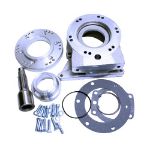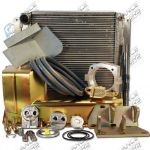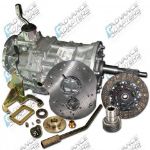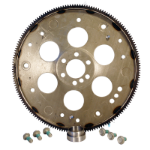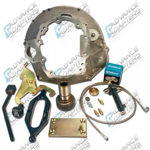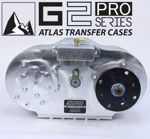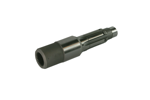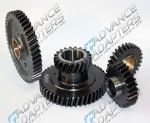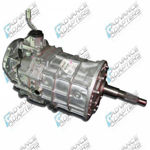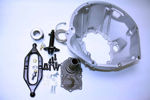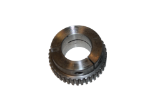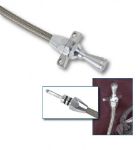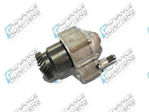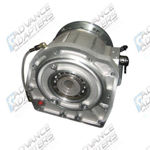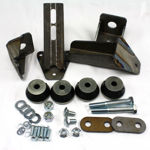The transmission is a critical component in any on-road or off-road vehicle. The better your transmission works, the more of an engine’s power is translated to performance. Even if a powerplant has 800 horsepower, it won’t matter if those horses can’t reach the wheels.
But there are a lot of moving parts in a transmission, and they all need to work in harmony for your truck or SUV to go. Below, experts have explained what components are in a transmission for both manual and automatic designs. This will give you a better understanding of how a transmission works to help with upgrades and repairs.
Parts of a Manual Transmission
- Flywheel — A metal disc made of extremely rigid metal. It’s what connects the engine to the clutch when the latter is engaged and also provides rotational mass.
- Clutch — This connects the flywheel to the input shaft. When disengaged, the transmission rotates independently of the engine.
- Clutch Pedal — A hydraulic part that is pressed to disengage the clutch.
- Input Shaft — What drives the countershaft gears using power supplied by the engine.
- Countershaft — Also called the layshaft, it contains an assortment of gears that connect to the output shaft gears and rotate constantly.
- Gears — The parts that control the vehicle’s speed and torque. Bigger gears produce more torque while smaller gears have a higher top-end speed.
- Output Shaft — The section that connects to the differential so power can be transferred to the wheels.
- Selector Fork and Collars — Used to lock a gear in place so torque can be sent to the output shaft.
- Dog Clutch — A special clutch permanently connected to the output shaft that engages it with the desired gear.
- Synchronizers — A part with frictional plates that slow down gears so they’re running at the same speed as the output shaft and thus can be engaged.
Parts of an Automatic Transmission
- Clutch — Like with a manual transmission, the clutch transfers power from the engine. However, the automatic transmission clutch pack has a drum with four discs that are squeezed together by a piston.
- Gears — Modern automatic transmissions use a mechanical planetary gear design with a sun gear, planet gears and ring gear that interact to achieve the desired speed and torque.
- Bands — Steel rings surrounding the clutch drum that tighten under pressure to stop the drum from turning so the vehicle can shift or stop.
- Hydraulic System — Consists of a valve body, transmission fluid, oil pump, seals and gaskets to provide the needed pressure to control the clutch and bands. This is sometimes called the “brains of the transmission.”
- Governor and Modulator — These decide when the gears will shift by monitoring the vehicle’s throttle position and speed.
- Torque Converter — An “idling clutch” between the engine and gears that disengages the transmission when the vehicle is stopped so the engine doesn’t stall.
Advance Adapters has a large collection of off-road transmissions and components for DIYers. Shop for new transmissions, rebuilt transmissions, shifters, gears and other products to get the power you need.
Frequently Asked Questions
What are the main components inside a manual transmission?
The main components inside a manual transmission include the input shaft, output shaft, countershaft, gears, synchronizers, shift forks, and the clutch assembly. These parts work together to transfer engine power to the wheels while allowing gear changes.
How does the hydraulic system in an automatic transmission work?
The hydraulic system in an automatic transmission uses transmission fluid under pressure to control clutches and bands. This pressure is regulated by a valve body, which directs fluid flow to engage the appropriate gears smoothly without driver input.
What role do synchronizers play in a transmission?
Synchronizers in a transmission help match the speed of the gears being engaged, allowing smooth and noise-free shifting. They prevent gear grinding by synchronizing the rotational speeds before the gears lock together.


